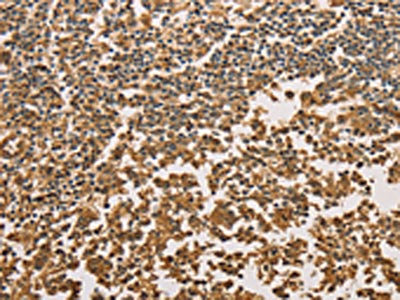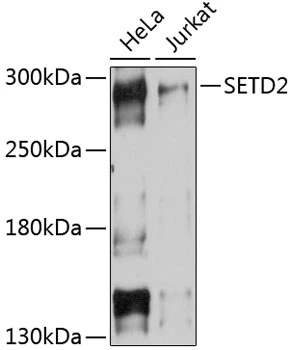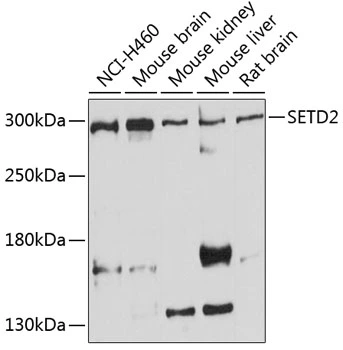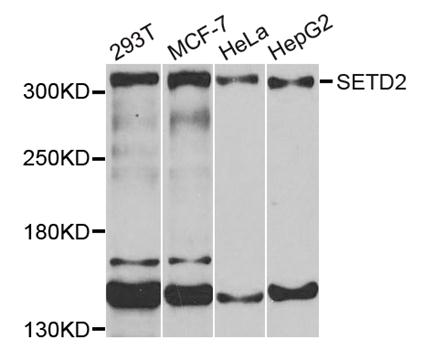HYPB/SETD2 antibody
GTX127905
ApplicationsImmunoFluorescence, Western Blot, ImmunoCytoChemistry, ImmunoHistoChemistry, ImmunoHistoChemistry Paraffin
Product group Antibodies
TargetSETD2
Overview
- SupplierGeneTex
- Product NameHYPB/SETD2 antibody
- Delivery Days Customer9
- Application Supplier NoteWB: 1:500-1:3000. IHC-P: 1:100-1:1000. *Optimal dilutions/concentrations should be determined by the researcher.Not tested in other applications.
- ApplicationsImmunoFluorescence, Western Blot, ImmunoCytoChemistry, ImmunoHistoChemistry, ImmunoHistoChemistry Paraffin
- CertificationResearch Use Only
- ClonalityPolyclonal
- Concentration1.22 mg/ml
- ConjugateUnconjugated
- Gene ID29072
- Target nameSETD2
- Target descriptionSET domain containing 2, histone lysine methyltransferase
- Target synonymsHBP231, HIF-1, HIP-1, HSPC069, HYPB, KMT3A, LLS, MRD70, RAPAS, SET2, p231HBP, histone-lysine N-methyltransferase SETD2, huntingtin interacting protein 1, huntingtin yeast partner B, huntingtin-interacting protein B, lysine N-methyltransferase 3A, protein-lysine N-methyltransferase SETD2
- HostRabbit
- IsotypeIgG
- Protein IDQ9BYW2
- Protein NameHistone-lysine N-methyltransferase SETD2
- Scientific DescriptionHuntingtons disease (HD), a neurodegenerative disorder characterized by loss of striatal neurons, is caused by an expansion of a polyglutamine tract in the HD protein huntingtin. This gene encodes a protein belonging to a class of huntingtin interacting proteins characterized by WW motifs. This protein is a histone methyltransferase that is specific for lysine-36 of histone H3, and methylation of this residue is associated with active chromatin. This protein also contains a novel transcriptional activation domain and has been found associated with hyperphosphorylated RNA polymerase II. [provided by RefSeq]
- Storage Instruction-20°C or -80°C,2°C to 8°C
- UNSPSC12352203
References
- González-Rodríguez P, Engskog-Vlachos P, Zhang H, et al. SETD2 mutation in renal clear cell carcinoma suppress autophagy via regulation of ATG12. Cell Death Dis. 2020,11(1):69. doi: 10.1038/s41419-020-2266-xRead this paper







